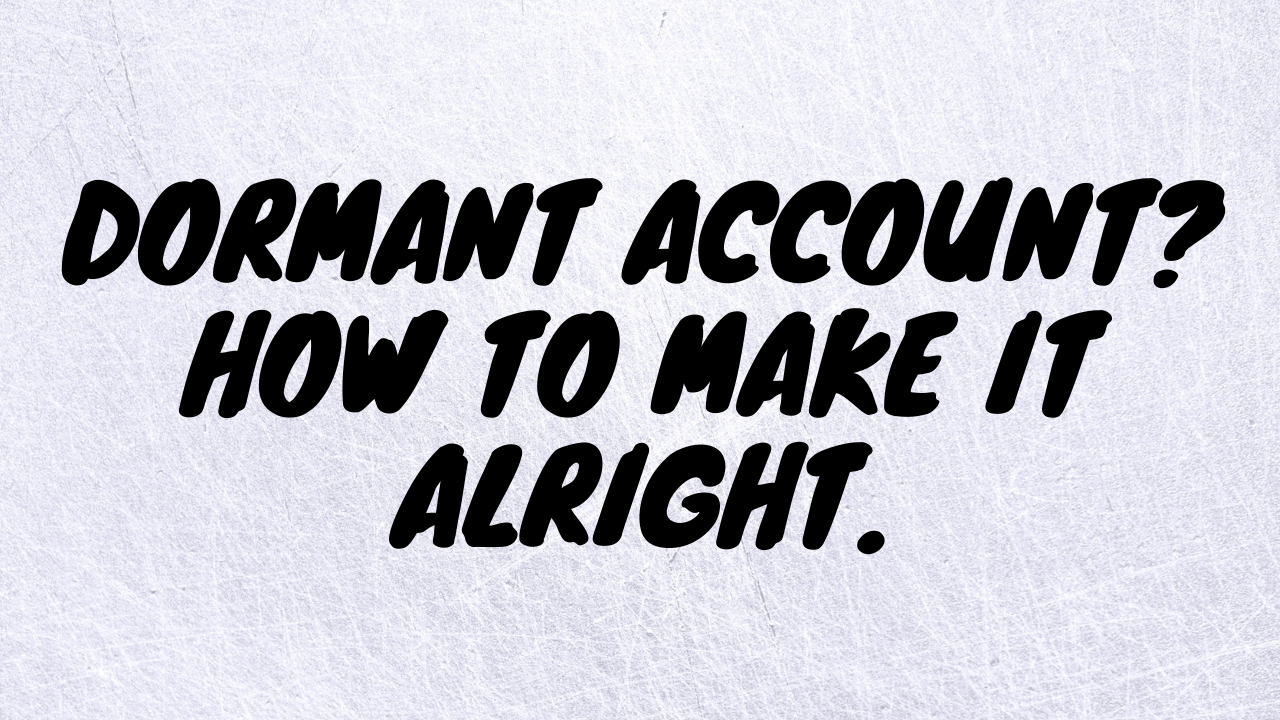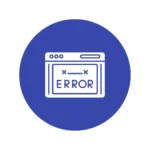A dormant bank account literally means an inactive account. A bank account which is not been used for more than 2 years
A dormant account is a classification of an account by the bank or financial institute based on the uses of an account by the account holder.
It helps the bank to identify the inoperative accounts and take appropriate measures on time and avoid income leakage as well as unwanted complications on accounts.

So, marking your account as dormant or inoperative is a good thing in one way? Nevertheless, it’s recommended not to let an account dormant.
Here’s the reason why?
You will have to produce and submit all the documents such as your ID card and PAN card.
You may also have to do a transaction at the cash counter to activate your account once again.
Unknowingly if you draw a cheque in order to pay someone. It may get bounce with the reason since account is format or refer to the drawer.
So, unnecessarily you will have to go through all these hurdles just because you did not operate the account for a while.
Moreover, it’s a complete waste of time and money.
How to make it alright!
You have got to make sure that you do transactions in your account occasionally if not frequently. The account becomes inoperative or dormant if you are not using it for 2 years.
So, once in a while doing a few transactions in your account is a good habit. Do not just keep your account idle. It does not give any benefit at all.
If in case your account becomes dormant, do the following steps to regain access to your savings or current account.
- Go to the bank and enquire about the status of your account
- Submit your KYC documents and let your bank update the system.
- Lastly, do a transaction with your cheque and that’s how you gain access to your account.
Being an account holder, what you need to be aware of.
Having an account in the bank is the beginning of every financial matter one can think of. One has to know the basic ideas of how to maintain an account. It may be a savings bank or a business current account. Everything starts from there.
Therefore, the basics of savings/current accounts need to be known by everyone who has it. When we say basics of savings and current accounts. We normally meant the following criteria
- What are savings banks and current accounts?
- What charges do banks normally levy on these?
- Is an ATM card comes for free? If it’s chargeable then what are those charges you are paying?
- How about a chequebook? How much do you pay to have a chequebook?
- Does Internet banking come free of cost?
- What benefits are you going to get if you have an account?
The basic difference between a savings bank and a current account is that the former is basically for saving funds. It may be a normal savings bank account or others for a specific purpose such as a salary account or pension account.
The latter is for business purposes only.
The other thing is savings bank accounts are interest-bearing account while current account is not.
Charges that you normally pay
There are various types of charges bank usually levies on their clients.
Although bank offers zero balance account to the public when one open these account there are a few charges applicable to them too.
Let’s find out about these charges
In a savings bank account, normal charges levied to you are as under
- Minimum balance maintenance
- SMS charges
- Fund transfer including NEFT and RTGS
- Cheque bounce charges
- ATM annual maintenance
- Draft purchase and cancellation
- Cheque book issue
- Statement of account
- Some banks levy service charge
Whereas in a current account in addition to the above, there is
- Account keeping charges
- Cash pick-up charges
Roughly it’s been mentioned almost all the charges a bank account has. How much banks charge you depends on bank to bank and their terms and conditions.
Other add-on facilities, are for free?
No way! There is no such thing which is 100 percent free. It will always cost you. Registration might be free but ultimately it always comes down to paying fees and charges.
Whether it is cheap or costly, that’s another thing. Add-on facilities such as ATM card, and chequebook has maintenance charges and issuance charges respectively.
It’s worth mentioning that services such as internet banking, mobile banking, doorstep banking, and tele-calling services are for free. There is no charge for registration. Charges are applicable only when one does transactions.
The good thing is all these facilities are worth using as their benefits outweigh their cons.
In the present day, it become more mandatory to have an account as a maximum of the transactions are going towards digital mode.
The benefits one can get from having an account are huge and one should not shy away from having it. Right from the beginning.
To sum up, if one started maintaining an account in the bank. Knowing about the product is a good idea. If you do not know then it will perplex you, even when your account becomes dormant you will be clueless.
So, try and sort it out through your statement of account. You will see what’s going on in your account.
And of course, which bank you choose is a decisive factor as it would tie you for life long. Some of the preferred banks are SBI, ICICI, HDFC and other popular PSU banks.
Choose wisely and enjoy your ride in the financial world.






